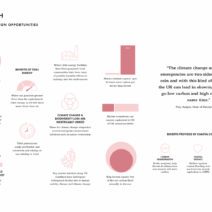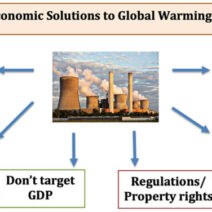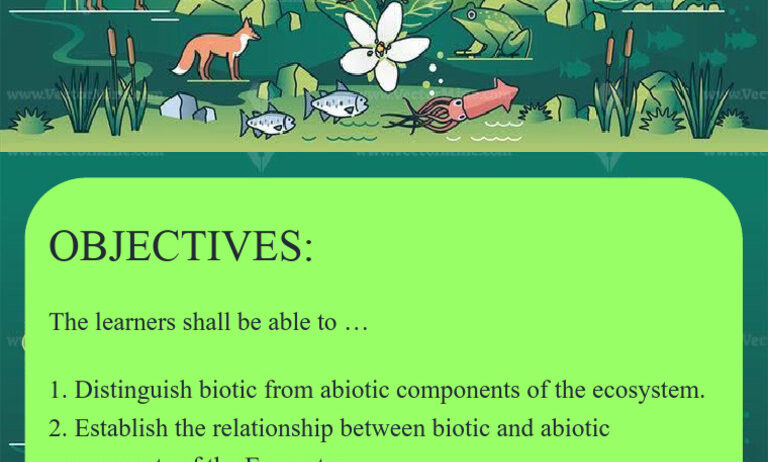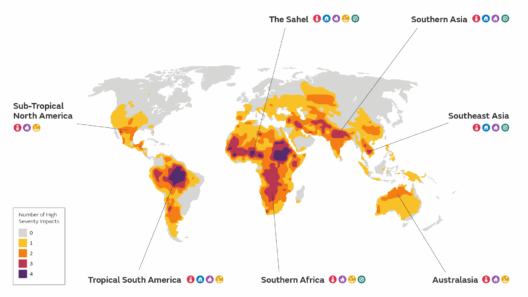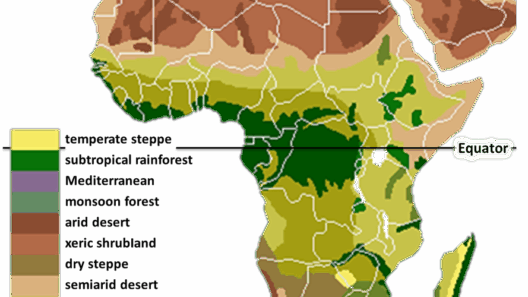Understanding the intricacies of climate necessitates a deliberate exploration of the definitions and dynamics surrounding abiotic and biotic components. At its core, climate refers to the long-term atmospheric conditions, including temperature, precipitation, humidity, and wind patterns, that characterize a given region. The discourse on whether climate can be classified as abiotic or biotic requires a nuanced approach, given that these categories fundamentally describe the components of ecosystems.
Abiotic factors encompass the non-living chemical and physical elements in the environment. This includes sunlight, soil, water, minerals, and atmospheric gases. These elements are critical; they provide the foundational support for life and determine the types of ecosystems that can thrive in various regions. For instance, in arid climates, the scarcity of water profoundly influences the types of flora and fauna that can exist, leading to unique desert ecosystems.
Conversely, biotic factors involve living components of ecosystems, such as plants, animals, fungi, and microorganisms. These organisms interact with one another and their abiotic surroundings in a complex web of relationships, influencing both biodiversity and ecosystem resilience. For example, trees in a forest not only provide habitat and food for various species but also play a pivotal role in carbon sequestration, a critical process in mitigating climate change.
The interplay between abiotic and biotic factors in shaping climates can be illustrated through specific ecosystems. Tropical rainforests, with their high temperatures and ample rainfall, thrive on a biotic community characterized by towering trees, diverse plant species, and an elaborate network of animals. These biotic components rely heavily on the abiotic factors of warmth and moisture, showcasing that while climate conditions are influenced by non-living elements, they fundamentally support and sustain life.
Moreover, the classification of climate itself as solely abiotic would be an oversimplification. The implications of climate on biotic components are profound, influencing species distribution, reproductive cycles, and even the timing of natural events such as migration and flowering. Species adapt to their climatic conditions; thus, changes in climate can lead to shifts in biodiversity, as seen in phenomenon like phenological mismatches, where species fail to synchronize their life cycles with climate patterns.
Climate influences not just individual species, but the structure and function of entire ecosystems. For example, tundra ecosystems, found in polar regions, exhibit unique abiotic characteristics such as low temperatures, short growing seasons, and permafrost. The biotic community here, comprised of specialized plants and animals, is adapted to withstand these conditions. However, as climate change leads to warming temperatures, the delicate balance of these ecosystems is thrown into disarray, potentially leading to increased biodiversity loss and altered ecosystem services.
Furthermore, one must consider the anthropogenic impact on climate systems. Human activities such as deforestation, industrial emissions, and urbanization have exacerbated climate change, tipping the natural balance between abiotic and biotic systems. Increased greenhouse gas concentrations have led to warmer global temperatures, altering precipitation patterns and causing extreme weather events. These changes not only affect abiotic conditions but also dramatically influence the resilience and composition of biotic communities.
The relationship between climate, as an effect of both abiotic and biotic systems, extends to ecosystem services that are essential for human survival. Ecosystem services such as water purification, pollination, and carbon storage are integrally linked to the health of biotic communities and their abiotic environment. When climate conditions change, these services are at risk. Altered precipitation patterns can disrupt freshwater availability, threatening agriculture, drinking water supplies, and natural habitats.
In addition to direct impacts, climate change has broader implications for global ecological processes. As climatic zones shift, species may find themselves out of their optimal habitats, leading to migrations or extinctions. This phenomenon particularly threatens biodiversity, as many species are unable to adapt quickly enough to the accelerating pace of climate change. Conservation efforts must, therefore, consider both the abiotic factors shaping climate and the biotic responses of ecosystems to ensure sustainability and ecological integrity.
In conclusion, framing climate strictly as abiotic or biotic overlooks the intricate interrelationship between non-living and living components of the Earth’s systems. Climate encompasses a broad spectrum of influences, with both abiotic and biotic factors intrinsically linked in a complex dynamic. Understanding this relationship is crucial for addressing the challenges posed by climate change. It is imperative to foster a holistic approach in environmental policy and conservation strategies, ensuring that both the physical and biological realms are accounted for. Only by recognizing and addressing these interconnected aspects can society hope to create effective responses to the pressing issue of climate change, safeguarding both ecological and human communities for future generations.

